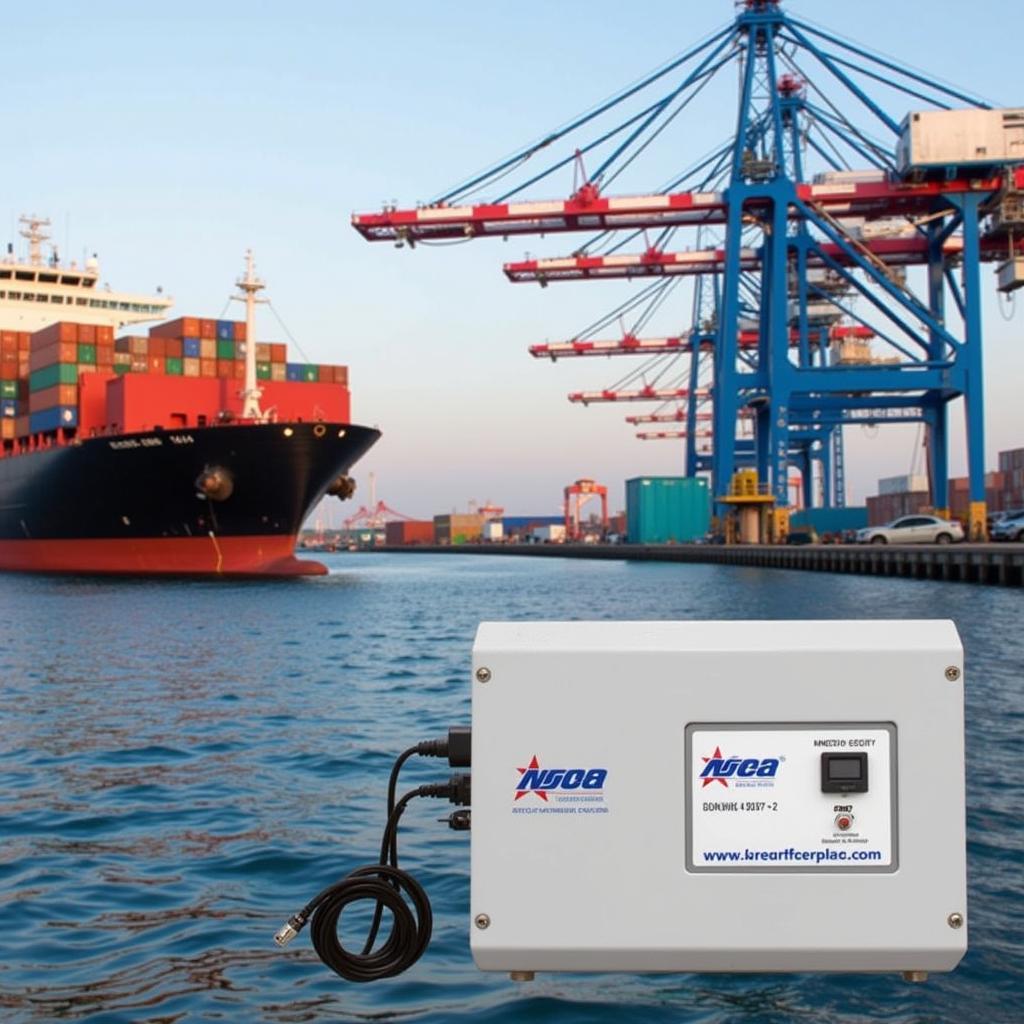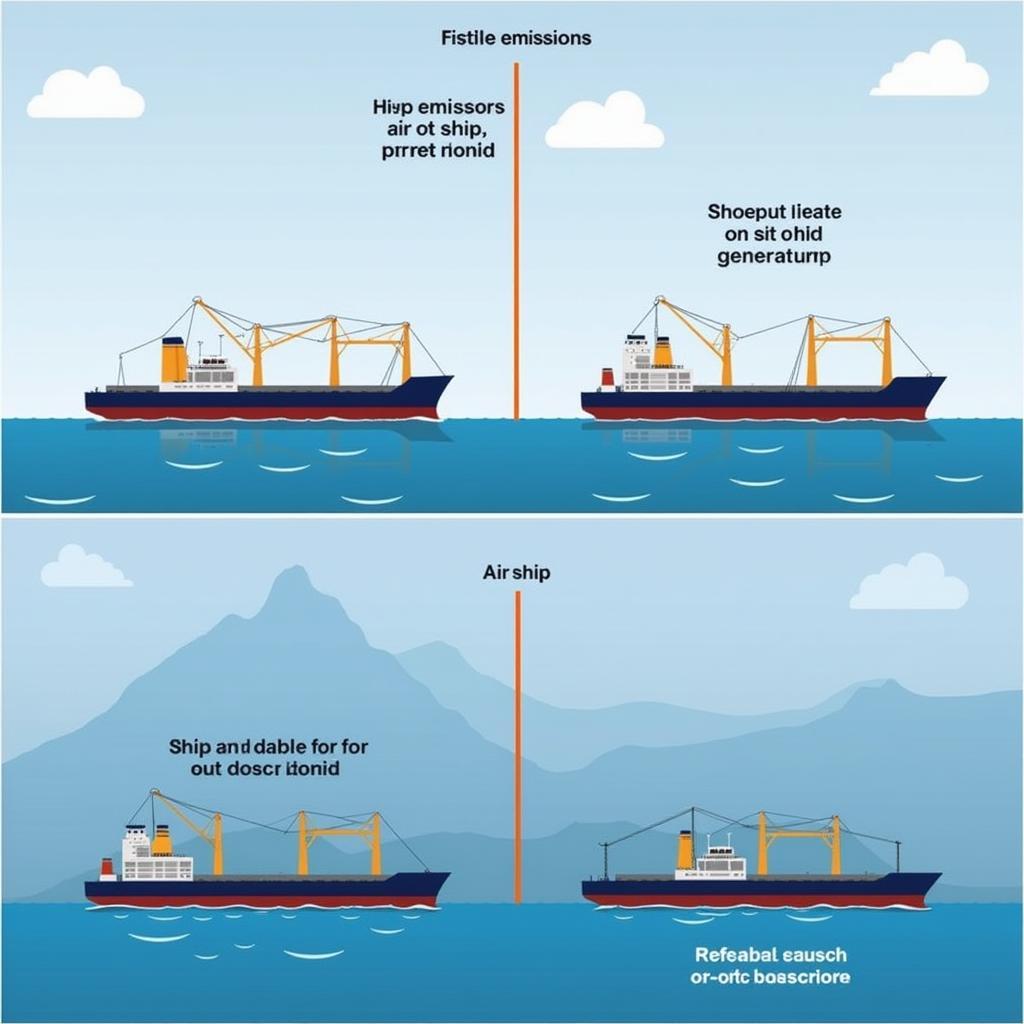Shore power converters are revolutionizing how ships receive power while docked, offering a cleaner, quieter alternative to running onboard generators. Specifically within the ASEAN region, adopting shore power, facilitated by these converters, is crucial for achieving sustainable maritime practices and improving air quality in bustling port cities.
What is an ASEA Shore Power Converter?
An Asea Shore Power Converter, also known as a shore-to-ship power converter, is a specialized electrical system that allows vessels to connect to the local power grid while at berth. This eliminates the need for ships to rely on their auxiliary diesel engines for onboard power, drastically reducing emissions and noise pollution. The converter acts as an interface, transforming the land-based power supply to match the specific voltage and frequency requirements of the ship’s electrical system. This technology is essential for creating more environmentally friendly ports across the ASEAN region.
ASEA, a prominent name in electrical engineering, offers cutting-edge solutions in this field, contributing significantly to the advancement of shore power technology globally and particularly within the rapidly developing maritime sector of Southeast Asia. Choosing the right ASEA shore power converter involves understanding the vessel’s specific power demands, the local grid’s electrical characteristics, and the relevant international standards.
 ASEA Shore Power Converter Connecting Ship to Grid
ASEA Shore Power Converter Connecting Ship to Grid
Benefits of Using ASEA Shore Power Converters
The adoption of shore power converters, particularly those developed by industry leaders like ASEA, offers a multitude of advantages for ports and shipping companies in ASEAN. From reducing harmful emissions to improving the quality of life in port cities, the benefits are significant. These benefits contribute to the overall sustainable development goals of the region, promoting both economic growth and environmental responsibility.
-
Reduced Emissions: By eliminating the need for running diesel engines at berth, shore power drastically cuts harmful emissions like sulfur oxides (SOx), nitrogen oxides (NOx), and particulate matter (PM). This is crucial for improving air quality in port cities and contributing to global efforts to combat climate change.
-
Noise Reduction: Ships running auxiliary engines while docked create significant noise pollution, impacting nearby communities. Shore power offers a much quieter alternative, enhancing the living environment around ports.
-
Lower Operating Costs: While there is an initial investment involved, using shore power can lead to lower operating costs for shipping companies in the long run. Reduced fuel consumption and engine maintenance contribute to significant savings over time.
-
Improved Port Efficiency: Shore power systems contribute to more efficient port operations by reducing the need for fuel bunkering while at berth, freeing up valuable time and resources.
 Ship Using Shore Power with Reduced Emissions
Ship Using Shore Power with Reduced Emissions
Choosing the Right ASEA Shore Power Converter
Selecting the appropriate ASEA shore power converter is a critical decision that requires careful consideration of several factors. It’s essential to work with experts and consult relevant guidelines to ensure optimal performance and safety.
-
Power Requirements: Determining the vessel’s power needs is the first step in choosing the right converter. The converter must be able to supply sufficient power to meet all onboard demands while the ship is at berth.
-
Grid Compatibility: The converter must be compatible with the local power grid’s voltage and frequency. ASEA offers converters designed to work with various grid specifications, ensuring seamless integration.
-
International Standards: Compliance with international standards is paramount for safety and reliability. ASEA shore power converters adhere to stringent industry regulations, providing assurance of quality and performance.
“Choosing the correct shore power converter is an investment in the future of sustainable shipping,” says Dr. Anya Sharma, a leading maritime engineer specializing in sustainable port development at the National University of Singapore. “It’s not just about compliance; it’s about contributing to cleaner air and healthier communities around our ports.”
Conclusion
ASEA shore power converters play a vital role in transitioning the maritime sector towards a more sustainable future, especially in the dynamic ASEAN region. By facilitating the use of shore power, these converters contribute to cleaner air, quieter ports, and more efficient operations. Adopting this technology is a significant step towards achieving environmentally responsible shipping practices and fostering sustainable development within the ASEAN community and beyond. Choosing an ASEA shore power converter is an investment in a greener maritime future for all.
FAQ
- What are the main advantages of using shore power? The main advantages include reduced emissions, noise reduction, and potential cost savings.
- How does a shore power converter work? It converts the land-based power supply to match the ship’s electrical requirements.
- Are ASEA shore power converters compliant with international standards? Yes, they adhere to stringent industry regulations.
- What factors should I consider when choosing a shore power converter? Consider the vessel’s power needs, grid compatibility, and international standards.
- What is the role of shore power in sustainable shipping? It significantly reduces emissions and noise pollution, promoting environmentally friendly practices.
- How does shore power benefit ASEAN ports? It improves air quality in port cities and contributes to the region’s sustainability goals.
- What are the long-term cost implications of using shore power? While there’s an initial investment, it can lead to lower operating costs due to reduced fuel consumption.
For assistance, please contact us at Phone: 0369020373, Email: [email protected], or visit our office at Ngoc Lien Village, Hiep Hoa, Bac Giang, Vietnam. We offer 24/7 customer support.
